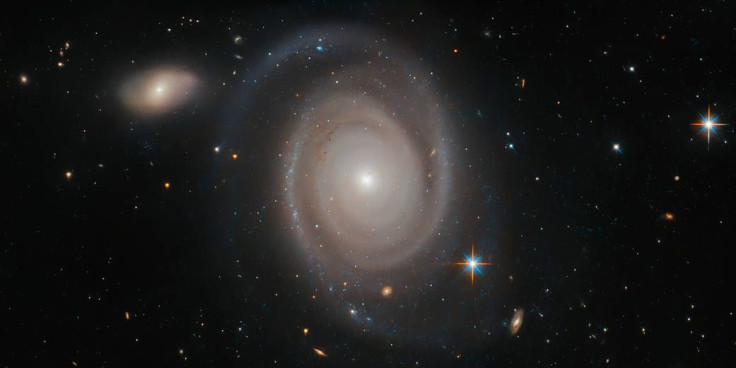NASA Hubble Snaps Stunning Cluster Of 50 Galaxies 230 Million Light-Years Away

The Hubble Space Telescope operated by NASA and the European Space Agency (ESA) was able to capture a remarkable photo of a cluster of galaxies. According to the space agencies, these galaxies are bound to one another due to their gravitational forces.
The subject featured in Hubble’s latest photo is a galaxy known as NGC 1706. According to the ESA, this galaxy is located within the Dorado constellation and is about 230 million light-years away. It was first discovered on December 25, 1837, by a British astronomer named John Herschel.
Like Earth’s neighborhood Milky Way, NGC 1706 is a spiral galaxy. In the photo taken by Hubble, which directly captured the face of the galaxy, NGC 1706’s spiral shape can be clearly seen through its twirling arms filled with gas, dust and star formations.
“Galaxies may seem lonely, floating alone in the vast, inky blackness of the sparsely populated cosmos — but looks can be deceiving,” the ESA said in a statement. “This image of NGC 1706, taken by the NASA/ESA Hubble Space Telescope, is a good example of this. NGC 1706 is a spiral galaxy, about 230 million light-years away, in the constellation of Dorado.”
According to the ESA, NGC 1706 belongs to a galactic cluster that is composed of up to 50 galaxies, some of which can be spotted in Hubble’s photo. The agency noted that around 50% of all the known galaxies belong to a group and are bound together by their strong gravitational forces. Milky Way, for instance, is part of a group along with its neighbor the Andromeda galaxy.
“NGC 1706 is known to belong to something known as a galaxy group, which is just as the name suggests — a group of up to 50 galaxies which are gravitationally bound and hence relatively close to each other,” ESA stated. “Around half of the galaxies we know of in the universe belong to some kind of group, making them incredibly common cosmic structures.”
“Our home galaxy, the Milky Way, belongs to the Local Group, which also contains the Andromeda galaxy, the Large and Small Magellanic clouds, and the Triangulum galaxy,” the agency added.
© Copyright IBTimes 2024. All rights reserved.





















